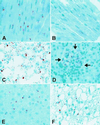Experimental infection model for Sin Nombre hantavirus in the deer mouse (Peromyscus maniculatus)
- PMID: 10973478
- PMCID: PMC27067
- DOI: 10.1073/pnas.180197197
Experimental infection model for Sin Nombre hantavirus in the deer mouse (Peromyscus maniculatus)
Abstract
The relationship between hantaviruses and their reservoir hosts is not well understood. We successfully passaged a mouse-adapted strain of Sin Nombre virus from deer mice (Peromyscus maniculatus) by i.m. inoculation of 4- to 6-wk-old deer mouse pups. After inoculation with 5 ID(50), antibodies to the nucleocapsid (N) antigen first became detectable at 14 d whereas neutralizing antibodies were detectable by 7 d. Viral N antigen first began to appear in heart, lung, liver, spleen, and/or kidney by 7 d, whereas viral RNA was present in those tissues as well as in thymus, salivary gland, intestine, white fat, and brown fat. By 14 d nearly all tissues examined displayed both viral RNA and N antigen. We noted no consistent histopathologic changes associated with infection, even when RNA load was high. Viral RNA titers peaked on 21 d in most tissues, then began to decline by 28 d. Infection persisted for at least 90 d. The RNA titers were highest in heart, lung, and brown fat. Deer mice can be experimentally infected with Sin Nombre virus, which now allows provocative examination of the virus-host relationship. The prominent involvement of heart, lung, and brown fat suggests that these sites may be important tissues for early virus replication or for maintenance of the virus in nature.
Figures



References
-
- Nichol S T, Spiropoulou C F, Morzunov S, Rollin P E, Ksiazek T G, Feldmann H, Sanchez A, Childs J, Zaki S, Peters C J. Science. 1993;262:914–917. - PubMed
-
- Mertz G J, Hjelle B L, Bryan R T. Adv Intern Med. 1997;42:373–425. - PubMed
-
- Childs J E, Ksiazek T G, Spiropoulou C F, Krebs J W, Morzunov S, Maupin G O, Gage K L, Rollin P, Sarisky J, Enscore R, et al. J Infect Dis. 1994;169:1271–1280. - PubMed
Publication types
MeSH terms
Associated data
- Actions
- Actions
- Actions
- Actions
- Actions
- Actions
- Actions
- Actions
Grants and funding
LinkOut - more resources
Full Text Sources
Medical
Molecular Biology Databases

